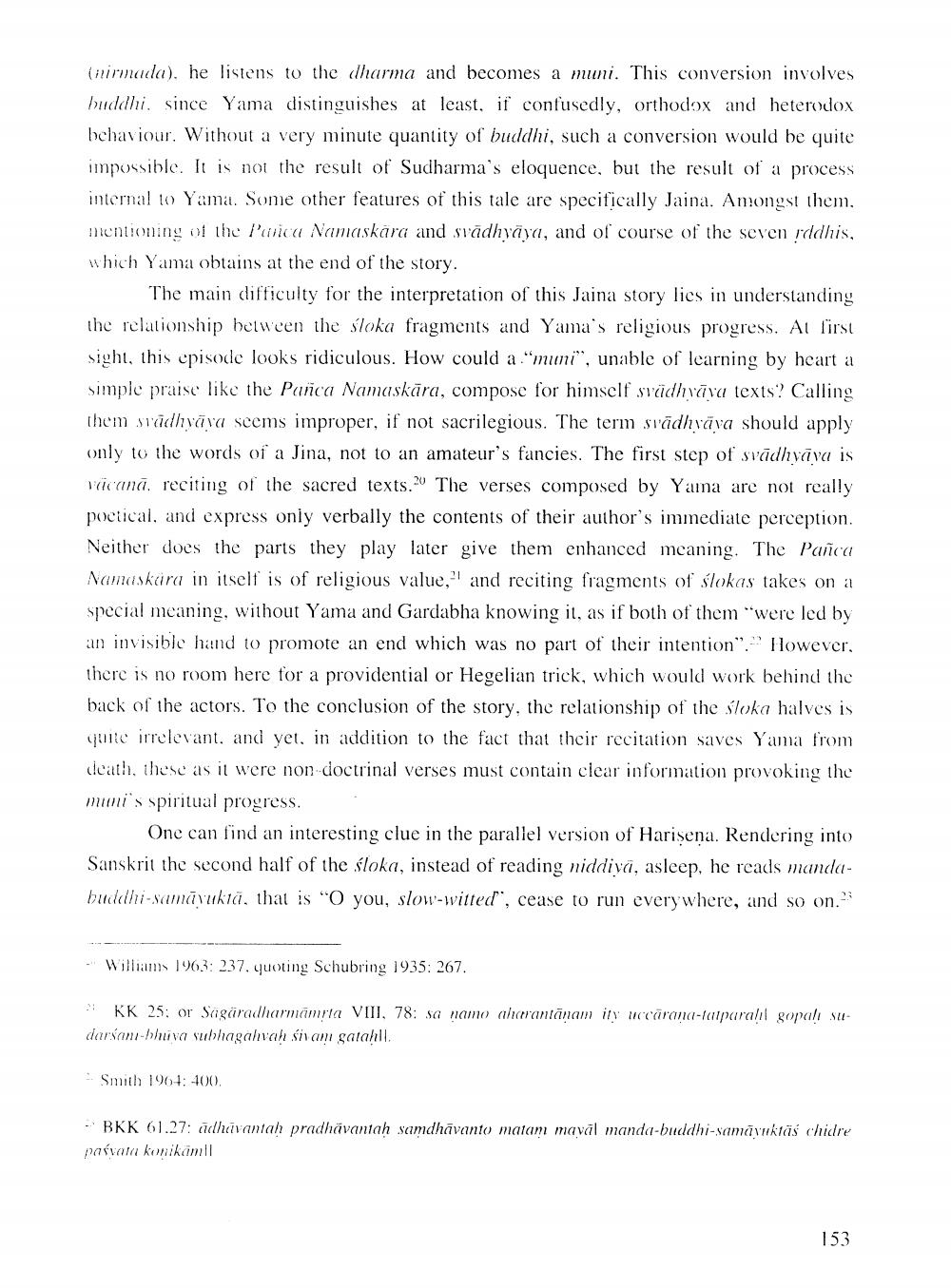________________
(itirmada), he listens to the dharma and becomes a muni. This conversion involves buddhi. since Yama distinguishes at least, if confusedly, orthodox and heterodox behaviour. Without a very minute quantity of buddhi, such a conversion would be quite impossible. It is not the result of Sudharma's eloquence, but the result of a process internal 10 Yama. Some other features of this tale are specifically Jaina. Amongst them, mentioning of the Puica Namaskara and svādhyāya, and of course of the seven rddhis, which Yama obtains at the end of the story.
The main difficulty for the interpretation of this Jaina story lies in understanding the relationship between the sloka fragments and Yama's religious progress. At first sight, this episode looks ridiculous. How could a “muni”, unable of learning by heart a simple praise like the Pañca Namaskāra, compose for himself stüdhyāva texts? Calling them srdliväva seems improper, if not sacrilegious. The term stādhväva should apply only to the words of a Jina, not to an amateur's fancies. The first step of svādhyāva is vicana, reciting of the sacred texts.20 The verses composed by Yama are not really poetical, and express only verbally the contents of their author's immediate perception. Neither does the parts they play later give them enhanced meaning. The Parica Namaskara in itself is of religious value," and reciting fragments of slokas takes on a special meaning, without Yama and Gardabha knowing it, as if both of them were led by an invisible hand to promote an end which was no part of their intention".." However, there is no room here for a providential or Hegelian trick, which would work behind the back of the actors. To the conclusion of the story, the relationship of the sloka halves is quite irrelevant, and yet, in addition to the fact that their recitation saves Yama from death, these as it were non doctrinal verses must contain clear information provoking the muni's spiritual progress.
One can find an interesting clue in the parallel version of Harisena. Rendering into Sanskrit the second half of the śloka, instead of reading niddivä, asleep, he reads mundabuddhi-samīvuktā, that is "O you, slow-witted", cease to run everywhere, and so on.
- Williams 1963: 237. quoting Schubring 1935: 267.
KK 25: or Sagäradharmámra VIII, 78: sa namo aharantānam ir arccaranc-luitparalil gopal sudarśan-bhiva subhagahvah sian gatahll.
2. Smith 1964: 100,
- BKK 61.27: adhavantah pradhävantah samdhāvanto matam maväl manda-buddhi-samavuktās chidre pasvan konikämll
153




